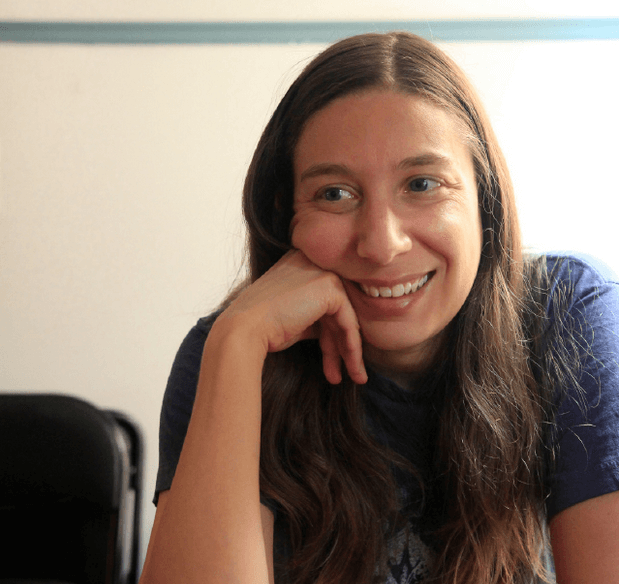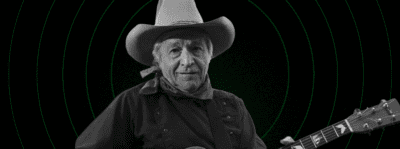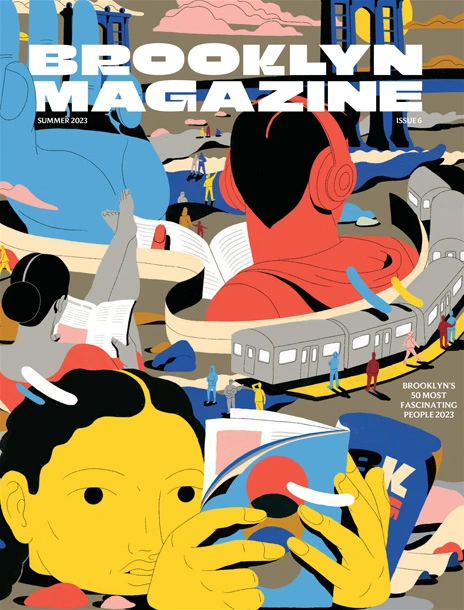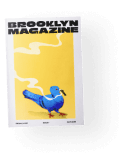On ADAM: Talking with Ariel Schrag About Identity, Sex, YA Novels, and, Well, More Sex


There are books that you read and know will stay with you forever—books that you give to your friends so that they can talk about them too, that you wish more than anything you could have given to your younger self. Ariel Schrag’s debut novel, ADAM, is one of those books.
Schrag—an acclaimed writer and cartoonist, whose graphic memoirs also fall into the essential reading camp—tackles issues of identity and sexuality, the things that make us all individuals, the things that make us all human. And she does this through the lens of a 17-year-old heterosexual male who passes as a trans man in order to get the lesbian girl of his dreams. (You really just need to read it.) Schrag writes with humor and pathos and an unflinching look at the complicated realities that surround us all as we set to the simultaneously monumental and mundane task of figuring out who we are and who we want to be. Oh, and sex. There’s more—and better—sex writing in this book than in just about any other I can think of. I spoke with Schrag about ADAM, identity, the young adult genre, and what it takes to write a good sex scene.
While ADAM is very different from your graphic memoirs, it does share a coming of age theme. What is it about that time of life that remains so relatable to the reader, no matter how young or old?
The things teenagers go through—a search for identity, falling in love, heartbreak, revelations about society and its various hypocrisies—are things we all go through for the rest of our lives, just never quite as intensely. As adults, anytime we start a new relationship, or job, or move to a new city, or have any sobering comprehension on life, those same feelings surface. Coming of age stories will always resonate, not only because of nostalgia, but because we continue to experience their themes. A teenager’s first time is just especially dramatic and there’s a certain empathy for innocence.
The protagonist of ADAM is a teenager, and the majority of the other characters are either his age or a few years older, which would seem to lead to the automatic classification of the book as being YA. Do you see it that way or do you not see it as being in any specific genre and also maybe just want the whole genre system to die a fiery death anyway? (Ha. That might just be me!)
When I began writing ADAM I didn’t think about whether it was YA or adult or who the intended audience would be. I wasn’t even sure it would turn into something I’d publish—I was just obsessed with this idea of a cisgendered straight teen boy passing as a trans man and wanted to see where it led. I was intrigued by the idea of taking a standard YA formula—awkward teen boy finds love for the first time—and subverting it with unexpected explicit and hopefully thought-provoking content about gender and sexuality. A film producer I worked with once told me: “The more classic you are with structure, the more subversive you can be with content.” I liked the idea that ADAM would feel both familiar and unorthodox. In terms of genre, yeah, I think the whole YA/adult divide and what apparently classifies something as one or the other is a little silly. ADAM is technically adult fiction, but I do hope teenagers read it.
So, sex. ADAM has a lot of sex. But what’s most notable (at least in my reading experience) is how honest the sex is. It’s so rare! Especially, I think, when it comes to any sexual activity that isn’t just between a man and a woman. Even then, though, sex is usually couched in so many euphemisms, or it tends not to be described past a certain point. In ADAM, it’s so direct and real and messy and funny and weird. I guess this isn’t technically a question, yet, so my real question is, did you keep in mind while writing the sex scenes that they would most likely be read by a young (YA) audience? Because I think it will be so great for teenagers to be able to identify the confusing things they’re feeling and experiencing as being universal.
It’s always really bothered me the way sex is often glossed over or faded out of in books. Novels are a medium where you’re inside someone’s head and it’s disappointing to be ceremoniously cut out at a crucial moment. ADAM is a book specifically about gender, anatomy, sexuality; the nature and mechanics of desire, so it would be ridiculous (and a failure) not to include explicit sex. What actually, physically goes down between two (or more) people is the point. I took inspiration from books such as The Line of Beauty by Alan Hollinghurst, The End of Alice by A.M. Homes, Stone Butch Blues by Leslie Feinberg, and Endless Love by Scott Spencer, which handle graphic sex especially well. As for whether teenagers read ADAM, that’s up to them and I hope they do. The sex in ADAM may be shocking to some people (because it mentions body parts rather than euphemisms or because it’s queer), but it’s also all consensual—which is not the case for much of the sex teenagers watch regularly on TV.
I love the way you deal with being transgender—something which is very topical right now, and which many people are confused/ignorant about—because it’s dealt with in as matter of fact of a way as everything else in the book. Which is not to say that anything is simplistic, rather that everything is written about in an honest way—meaning that no character is exempted from being portrayed as anything other than complex or, basically, human. Here’s the question: How did you avoid the trap of being too precious about any of your characters?
I feel like this question is whether or not I felt nervous writing unflattering depictions of trans people. I didn’t—though I do expect it to make some people uncomfortable. The book features characters of many identities; cis male, cis female, straight, gay, queer etc. and all of them, at some point, act obnoxious, self-involved, self-righteous, or entitled (as well as likable too!). Why should the trans characters be any different? There’s nothing I hate more than a saint-like, sanitized queer character. A couple of the female-to-male characters in ADAM behave, upon their entrance to manhood, like misogynistic teenage boys—which is something I’ve observed and wanted to comment on. Many of the trans characters in ADAM also have a notable slant toward the self-absorbed, which I think for most people in the early stages of transitioning is reality. How could it not be? Your presentation and often body are undergoing drastic changes on display to a not-especially-welcoming world. It would be insane not to be self-absorbed during this time.
ADAM; available June 10th at all sorts of local bookstores (buy local!)
Follow Kristin Iversen on twitter @kmiversen
You might also like 




















